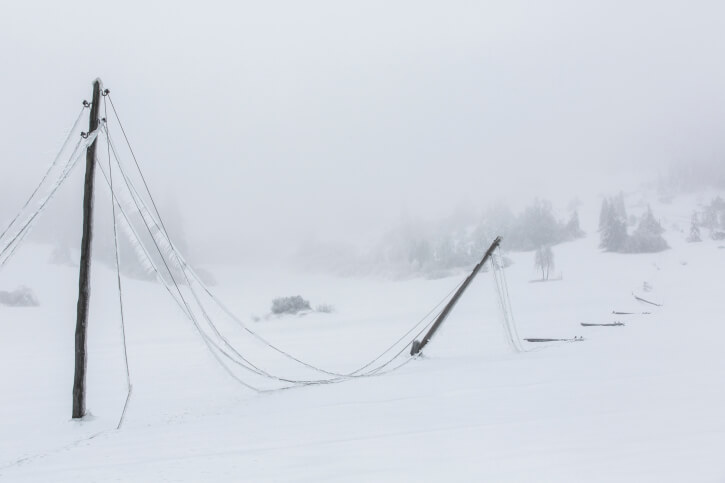
Winter Power Outages: 9 Savvy Steps
Power outages bring risks and challenges no matter when they occur. Summer outages can be quite difficult, but when the weather outside is bitterly cold, these difficulties can quickly escalate from demanding to dangerous.
Because winter outages are marked by an especially hazardous combination of conditions, follow these savvy steps to safeguard your family and home:
- Unplug or turn off all appliances and electronic devices. Make sure you also turn off electric furnaces, heat pumps, heaters, ceiling fans, tankless water heaters and similar components. When power is restored, furnaces and heat-generating devices draw a great deal of power, which can lead to hazardous overloads. Leave on one electric light, so you’ll know when power is restored.
- Dress warmly. Bundle up to stay warm and opt for multiple lighter layers rather than a single heavy layer. Don a cap, fingerless mitts and several pairs of socks to keep extremities warm and conserve body heat.
- Reduce heat loss. If the sun is shining, get maximum heat gain by opening blinds and drapes in windows that face south and/or west and closing those that face north and east. If it’s cloudy or nighttime, close all blinds and drapes to minimize heat loss.
- Move to a single room. Choose one with few windows or a heat source such as a fireplace or stove. Close doors or drape blankets over openings to hold in heat. If daytime indoor temperatures dip below 40 degrees, it’s time to relocate elsewhere.
- Preserve food. While the cold temperatures help preserve food, you’ll still want to keep refrigerator and freezer doors closed to conserve the cool air inside, or put food in a cooler outdoors. Test food with a food thermometer and throw it away if it registers higher than 40 degrees F.
- Prevent frozen pipes. If your water pipes are at risk of freezing, open taps to maintain a slow, continuous stream of water.
- Ventilate. If you’re using a kerosene, propane or similar heater, crack open a window so there’s sufficient ventilation. For safety, store all fuel outside your home.
- Cook. If you have a gas or propane stove, heat water for a continuous supply of coffee, tea and cocoa that warm from the inside, and bake cookies, simmer soup or make a casserole to produce hots foods and also warm the space.
- Watch for signs of hypothermia. Hypothermia is extremely dangerous, and infants, young children, the elderly and ill are at greatest risk. Early symptoms include shivering, shaking, slurred speech, disorientation and drowsiness. Monitor everyone’s body temperature with a thermometer, and seek medical assistance if readings fall to 96 degrees F.